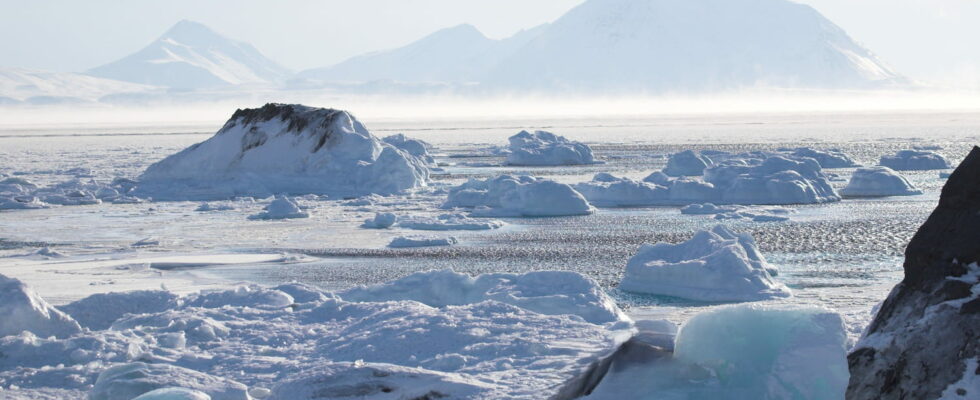During a study on the effects of global warming in the Arctic, NASA researchers were surprised to discover a secret military base buried under the ice of Greenland.
In April 2024, a NASA team boards a Gulfstream III aircraft for a scientific mission above the ice of Greenland. Their goal? Study the effects of climate change on the ice sheet, using high-tech radar capable of probing the icy depths. This seemingly routine mission aims to map the ice to better understand how it reacts to warming of the oceans and atmosphere. But as the plane flies over deserted expanses of snow, scientists are about to make an unexpected discovery.
While analyzing the first radar data, a researcher notices something strange beneath the icy surface. Instead of the compact layers of ice they expected to see, the surveys revealed an unusual geometric shape. Intrigued, the scientists refined their observations and discovered what appeared to be a set of artificial structures, buried under more than 30 meters of ice. At first, no one on board knows exactly what it is. Researchers explore the different possibilities, until they reach a stunning conclusion.
The structures detected under the ice are the remains of a former American military base built during the Cold War: Camp Century. This camp, designed in 1959, was part of a top secret project called Iceworm, intended to store nuclear missiles within firing range of the Soviet Union. Under the cover of scientific research on the Arctic, the United States had dug a veritable network of tunnels and rooms, forming a small underground city capable of accommodating 200 soldiers. But this project was abandoned in 1967, when the melting ice was already threatening the installation.
For more than half a century, Camp Century remained buried, forgotten by the general public and buried under snow. Today, rediscovered by chance, it reappears thanks to modern technologies. NASA researchers, fascinated by their discovery, quickly realized that this relic of the Cold War could soon be exposed due to the accelerated melting of the ice. And with this exposure, significant environmental risks loom.
Indeed, Camp Century contains an invisible threat. Beneath the structures frozen in ice, tons of chemical waste, fuel, and even radioactive residue from the mini-nuclear reactor that powered the base are still present. If the melting of the ice continues at this rate, this waste risks being released into the environment, leading to catastrophic consequences for the Arctic ecosystem.
What started as a simple climate research mission has turned into a race against time. NASA and scientists around the world are now wondering when this base will reappear on the surface and how to deal with the dangers it could unleash. The rediscovery of Camp Century is not only a dive into the secret history of the Cold War, it is also a warning of the unpredictable risks that melting ice has in store for us in the years to come.
